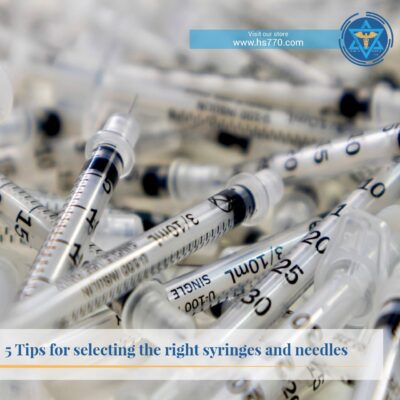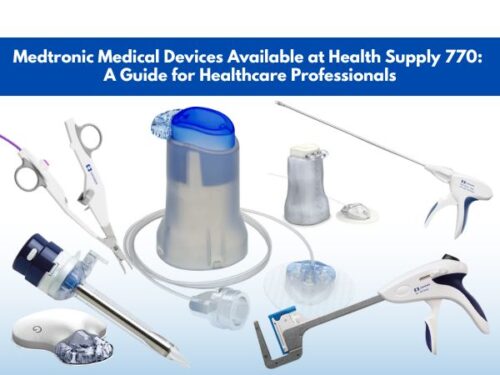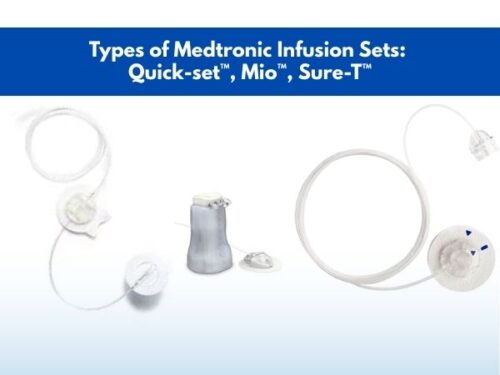5 Tips for Selecting the Right Syringes and Needles

When it comes to selecting both syringes and needles, there are a few things you need to take into account. With so many options on the market, it can be hard to know which ones are right for you and your medical needs.
Here are five tips to help you select the right syringes and needles for your next procedure:
1. Know the types of syringes.
2. Consider the size of the needle.
3. Select the right gauge.
4. Choose between Luer-Lok and Luer-Slip syringes.
5. Decide on a material.
Types of Syringes and Needles
There are many different types of syringes and needles available on the market today. Selecting the right one for your needs is important to ensure that you are able to administer the correct dosage of medication and avoid any potential complications.
The most common type of syringe is the disposable syringe. The syringe without a needle is a disposable syringe such as a bd syringe. These are typically made of plastic and have a plunger that is used to draw up the medication. The needle is attached to the syringe and can be disposed of after use.
If you are injecting medication multiple times per day, you may want to consider using a reusable syringe. These types of syringes can be made of metal or glass and can be sterilized between uses. The downside of using a reusable syringe is that there is a greater risk of infection if it is not properly sterilized.
Syringe needles also come in different sizes and lengths. The size of the needle you need will depend on the medication you are injecting as well as the thickness of your skin. A longer needle may be necessary if you are injecting into a muscle, while a shorter needle can be used for injections just under the skin.
Some medications require special needles known as winged needles or butterfly needles. These needles have wings on either side that help to stabilize the needle during injection. They are typically used for medications that need to be injected slowly, such as blood thinners or insulin.
How to Select the Right Syringe Needle?
Selecting the right syringe needle is very important. Let’s cover our top five tips for choosing a syringe needle.
-
Choose the Right Gauge
The thickness of the skin and the depth of the needles must be considered while choosing the gauge. The width or diameter increases as the gauge number decrease. In contrast, the width decreases as the number increases.
Needles with a bigger diameter also have walls that are thicker. They will therefore be stronger and more resilient. They aid in the penetration of more viscous liquids and denser skin.
The patient receiving the injections experiences less pain with a smaller diameter needle (higher gauge). It’s a suitable alternative for medications with low viscosities. The most widely used gauges are typically 26 and 27.
-
Measure the Skinfold’s Thickness
You should measure your skinfold. Pick a spot on your arm, abdomen, or thigh. Generally speaking, you should choose the area where you will inject most frequently.
Utilizing your forefinger and thumb, squeeze the skinfold. Make sure you’re pulling the skinfold away from the muscles and not just your skin. Take a measurement of the tissue between your thumb and forefinger. For this, a regular ruler will do.
The needle size for subcutaneous injections should be equal to one-third of the tissue thickness. The needle size for intramuscular injections should be 2/3′′ thicker than your tissue. Knowing this measurement will help you make a more informed decision about the length of your needle.
-
Select the Correct Length
The length of the syringe needle that you choose will depend on the size of the person. A longer needle is required for an adult than for a child. Additionally, think about where you’ll be sticking the needle. Some medications can be taken directly through the skin. A person’s muscle will need to be injected with others.
The muscle is infused using intramuscular injections. It extends farther than the skin’s subcutaneous layer. For this kind of injection, you’ll need a longer, thicker needle. Look into needles that are about an inch or longer.
-
Consider the Needle Bevel
The tip is formed by the needle’s bevel or angled surface. It aids in the injection of fluid or medicine into the skin. Bevels are frequently classified as short, medium, or long. Spinal needles are designed with cutting bevels.
A well-crafted bevel is meant to make it much simpler for the needle to pierce the skin. Additionally, the injection applicator will need to exert less power.
Although not essential to an injection’s success, the bevel is nonetheless significant. When administering an injection, the bevel should always be directed toward the bone. This lessens discomfort and trauma for the individual.
-
Consider What the Needle Is Being Used For
The type of syringe needle you use greatly depends on the substance being injected. You need a thin needle if you plan to inject Botox.
By adjusting the needle size, you can get rid of the pain that comes with using an insulin pen injector if you have diabetes. Additionally Insulin can be delivered just as efficiently with thin and short needles as with bd insulin syringes.
Injecting medications, such as insulin, into fatty tissue has been found to be beneficial. A long needle is not required. If you do inject insulin into your muscles, it will likely result in damage and be used up much more quickly.
How to Properly Store Syringes and Needles?
There are a few key things to keep in mind when storing syringes and needles:
- Syringes and needles should be stored in a clean, dry area away from direct sunlight.
- They should be stored in a container with a lid that fits.
- The container should be labeled clearly with the contents and the date.
- Both syringes and needles should be disposed of properly after use.
How to Dispose of Syringes and Needles?
When it comes to disposing of syringes and needles, there are a few key things to keep in mind. First, it’s important to use a sharps container that is approved by your local waste management authorities. Second, make sure to seal the container tightly before disposing of it in your regular trash. Finally, be sure to wash your hands thoroughly after handling any syringes or needles.
Conclusion
If you are in the market for syringes and needles, there are a few things to keep in mind. First, consider the size of the needle and syringe. Second, think about what type of material you want the needle to be made out of. Third, take into account how much liquid you will need to inject. Fourth, pay attention to the gauge of the needle. Finally, research different brands to find one that suits your needs best. By following these tips, you can be sure to select the right syringes and needles for your next injection project.
FAQs:
What are the different tips on syringes?
Syringes come with different tips. The different syringes include straight needles, beveled needles, Luer-Lok needles, and insulin needles.
How do you use a needle syringe?
To deliver a vaccine from a needle syringe, you draw up the fluid into the syringe, then place the syringe cap on the syringe and the needle into the vein. Next, you pull back on the plunger to inject the fluid into the vein.
What needle is used for injections?
A hypodermic needle is a syringe that is filled with a medicated liquid or gel, which is injected into the skin. It is usually used to administer a vaccine or medicine to the human body.
What is the most commonly used needle?
The most common needle is the 22 gauge needle. Moreover, it is used for routine blood draws and venipuncture.
Does needle size matter?
Longer needles can also increase the chances of bruising, bleeding, and pain. Short needles, being 4mm and 5mm pen needles, reduce the risk of injecting medication into your muscle.



















